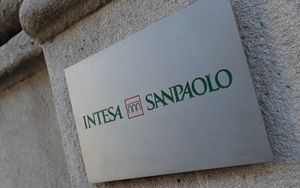(Finance) – After five months of uninterrupted declines, inflation in the Eurozone rose by a tenth in April, to 7% y/y; conversely, the ECB core index (excluding fresh food and energy) slowed to 7.3% after peaking at 7.5% in March (the first drop since January 2022). Headline inflation should drop again from May, down to 3% in December; the “core” index could end the year at higher levels, at 3.5%. The risks to this scenario are upwards and mainly linked to the services component, the dynamics of which will depend on the stability of demand in the sector. This is what emerges from the last one Focus Euro area of Intesa Sanpaolo.
The food – reads the report – they should help curb inflation in the coming months but the disinflationary impact of the decline in energy prices could be partly offset by upward pressure (especially on fresh food) deriving from the drought expected in the summer in Europe southern. Consequently, the annual trend in food prices is expected to remain quite high also in the second half of the year, closing 2023 with a trend of 3.6%. Only in 2024 is food price inflation expected to “normalise”, settling at around 2%.
L’power it is expected to make a negative contribution to inflation again as early as May, and should reach a low point in October (-11% y/y). Subsequently, a recovery in positive territory is expected at the beginning of 2024, which will become more marked from the spring due to the complete exhaustion of government anti-increase measures. The normalization of global value chains is contributing to the slowdown in non-energy industrial goods prices. At the opposite, services inflation continues to accelerate, on the back of robust demand in the sector. Services will be the last component to show an inversion of trend for inflation, probably between the 3rd and 4th quarter of the year; the trend at the end of 2023 will remain very high, we estimate at 4.3%.
“Our scenario – reads the focus – is consistent with an acceleration in labor costs in the coming quarters, which could potentially increase the risks of a ‘wage-price spiral’. We have developed a two-equation model to estimate the extent of the “secondary effects”: the impact would be +0.4% on average annual inflation both in 2023 and in 2024. According to our forecasts, – continues Intesa Sanpaolo – general inflation could drop to 3% at the end of 2023, and continue the decline in the first part of next year, reaching a trough at 2.2% in spring 2024. Thereafter, we could see a rally following the complete exhaustion of the anti-inflation measures in Germany. will be even slower for the ECB core index (excluding fresh food and energy), which is expected at 3.5% at the end of the year, to return close to the 2% threshold only in the final part of 2024. The risks on the our scenario are upwards and diffused both to the core components (in particular to services, whose dynamics largely depend on the stability of demand), and, to a lesser extent, to the more volatile ones (fresh food and energy). In addition, above-expected wage growth would lead to a greater impact from second-round effects than currently estimated.”
